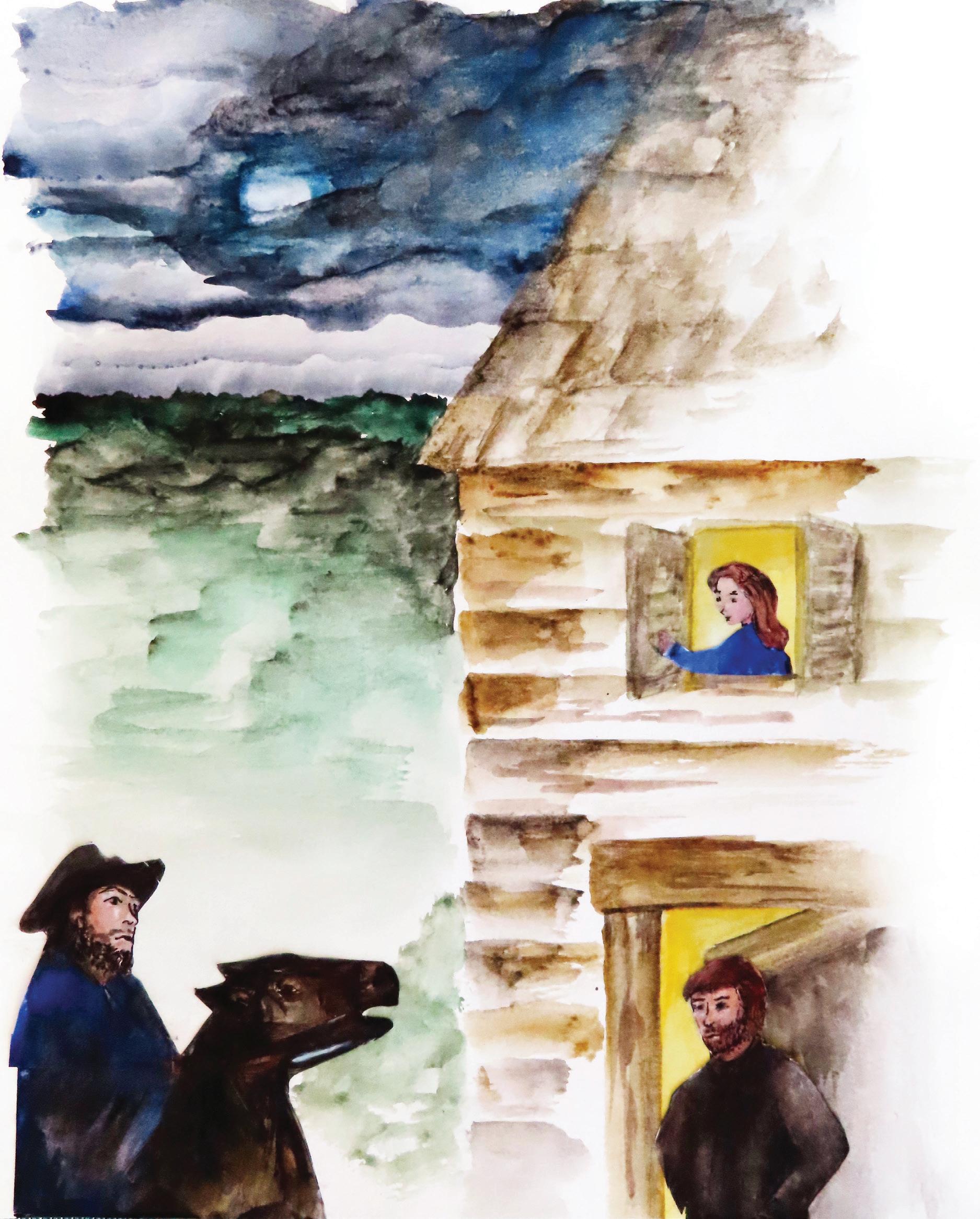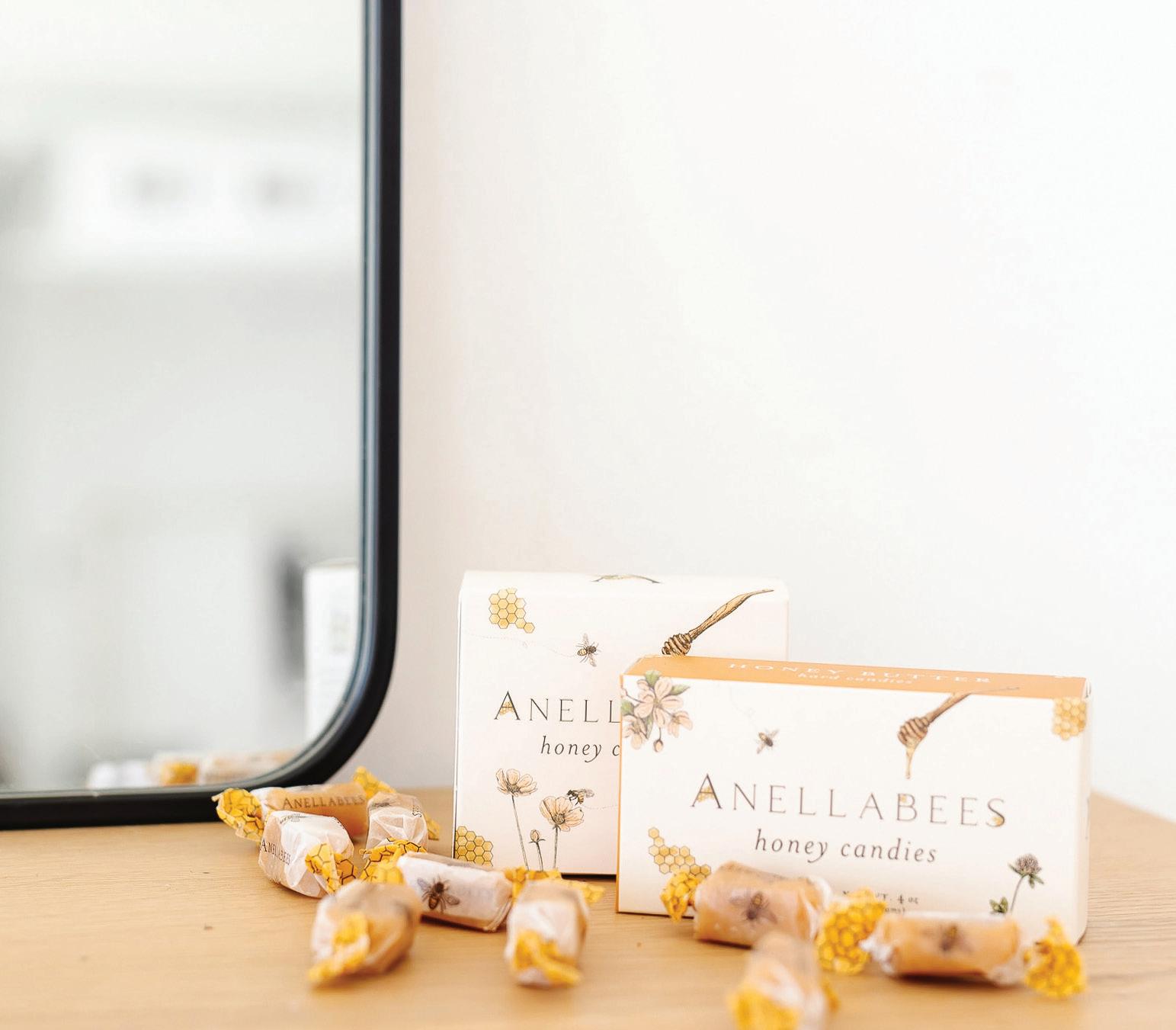
29 minute read
BEE GOOD COLLECTIVE
from OTK Issue 05
by One To Know
The Hive’s Daily Mantra
BEE Good Collective promises its customers that it will remain true to its mantra through every interaction:
Advertisement
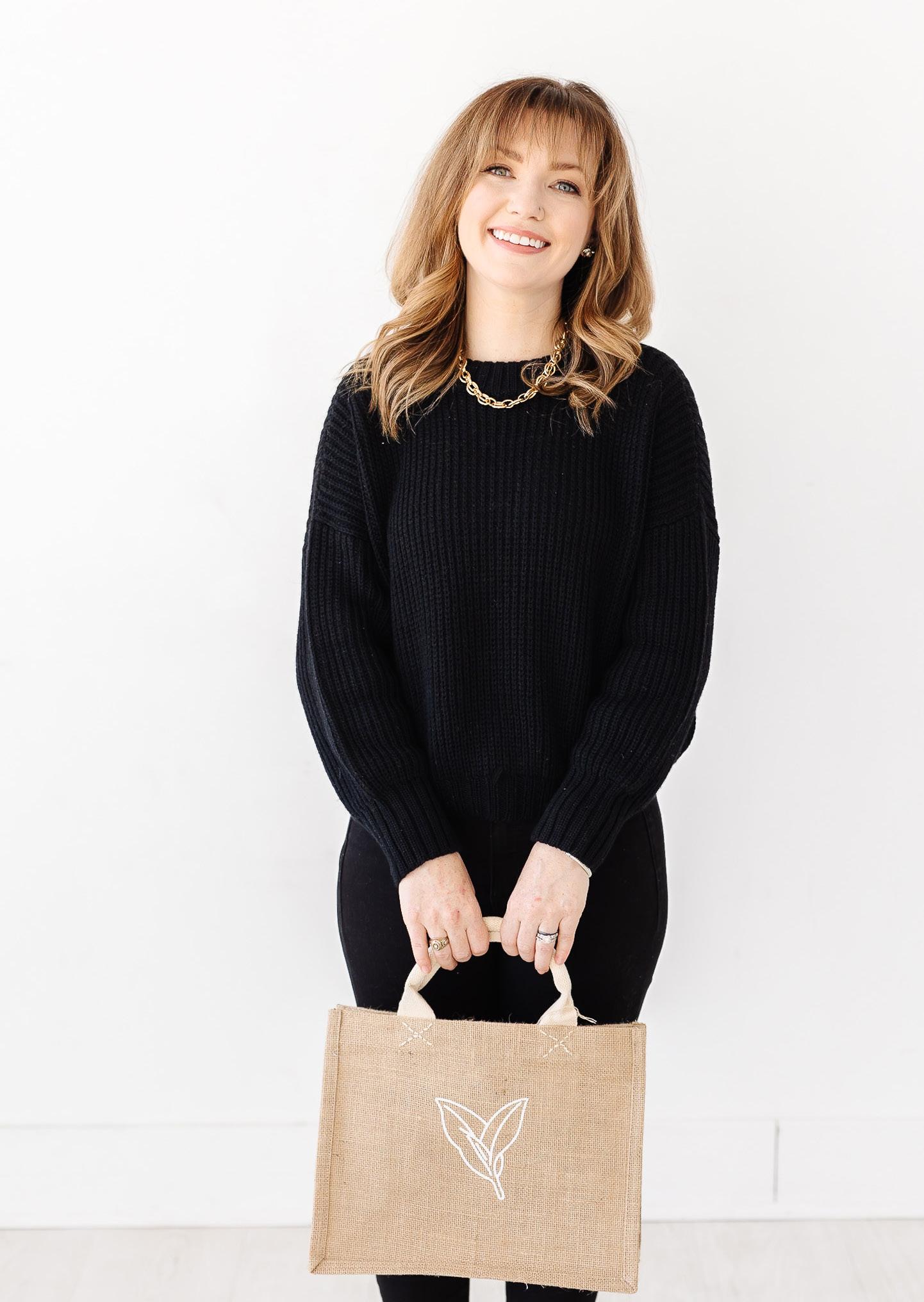
BEE Kind
BEE Happy
“I promise to leave my negative thoughts and emotions out of the hive so that I can spread happiness to all that I encounter.” BEE Authentic

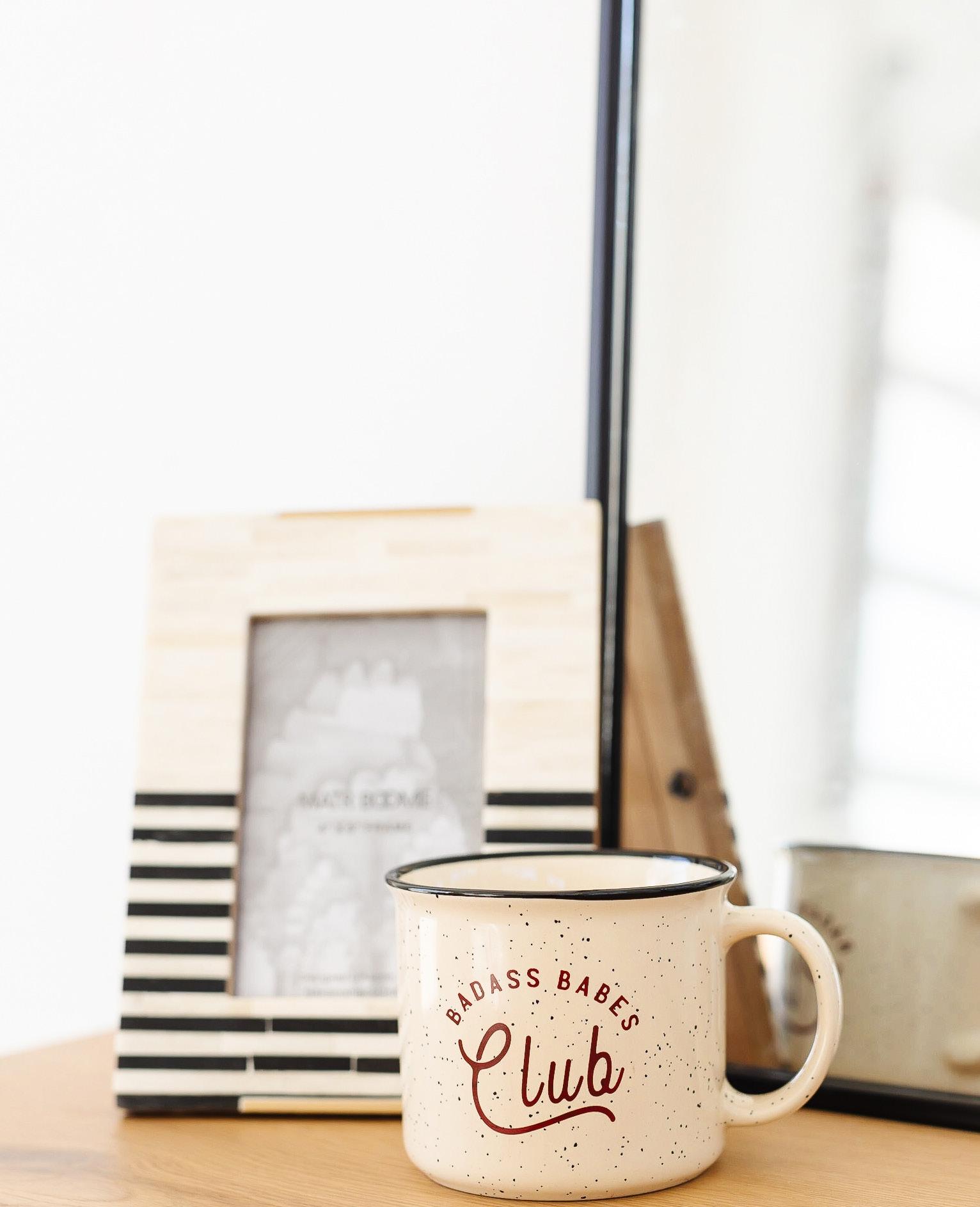
Conscientious Collector
Baillie Troskot, owner of BEE Good Collective, makes mindful purchasing a priority in her cozy Fort Worth shop.
By Jennifer Casseday-Blair
BEE the Best I Can BEE

BEE Good Collective, formerly known to shoppers as The Green Queen B, is Baillie Troskot’s effort to bring more meaningful clothing and home design items to Fort Worth. Troskot believes that consumers have an important choice in whom they will support with their purchases. By looking for products and services from conscious businesses, the local community can only benefit.
When deciding which brands she will carry in her store, Troskot says it’s an extensive process. “I really do my homework. I use wholesale platforms and connect with brands on Instagram and other social media outlets. I investigate a brand’s values and look for if they are doing social good, are eco-friendly or small batch, or give back in some way. I’ll even go to social media to see if they are living by their values,” she says.
Troskot said it was during the pandemic that she made a move toward being more mindful and less wasteful. “After months of being quarantined and accumulating more than 150 plants, I began blogging about products created by companies that were earth-minded and practicing social good,”
Troskot says. Progressing from the digital page to a physical retail shop was a short leap for her, and she opened for business early last year.
Of her current inventory, Troskot says the bread warmers and Swedish washcloths are among her favorite items and make great gifts for homeowners. She says, “In my shop, you will find items that are unique and that you can actually feel good about buying … not just because of the quality but because they come from brands that are ethical with sustainable practices.”
Storied Stones
Crafting a Cover Story
By Jocelyn Tatum Photos by Amber Bailey
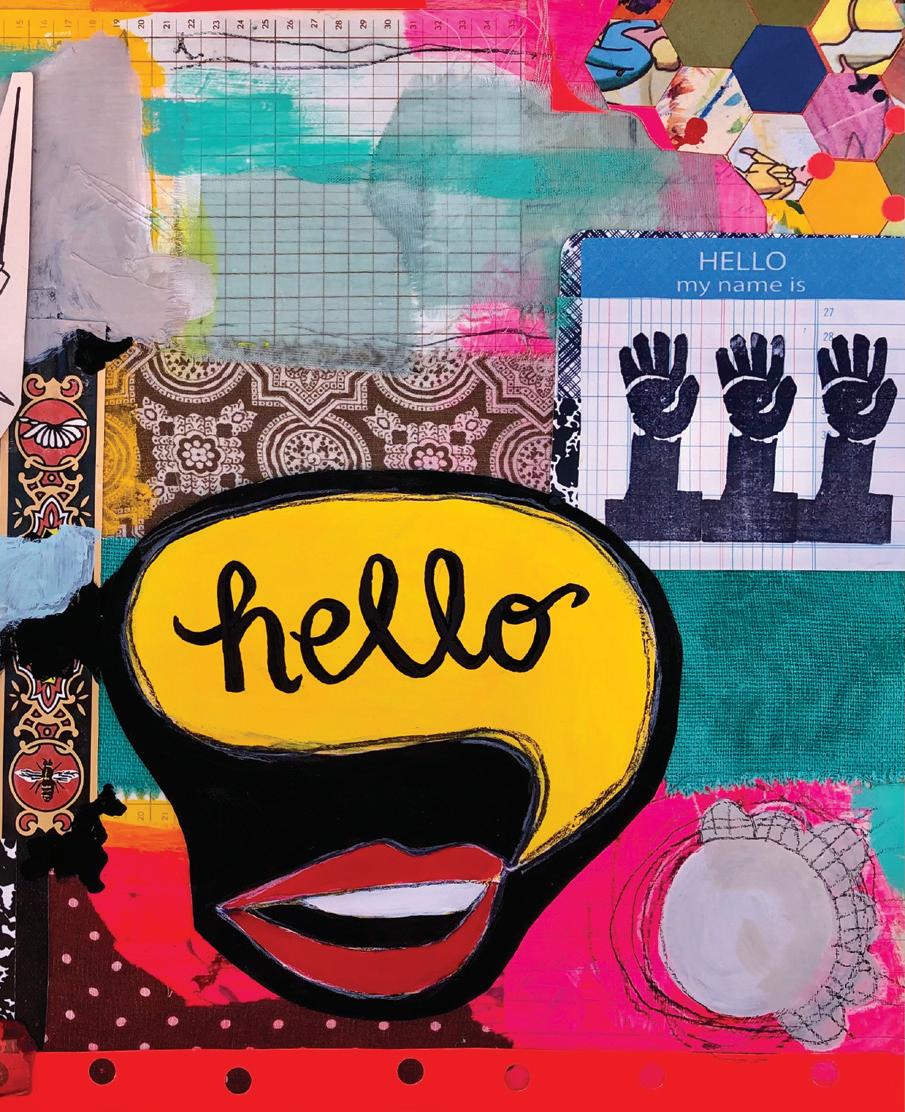

Just a few days before she designed this cover, she was on a flight back to the U.S. when the wing started to break off of her commercial aircraft at 30,000 feet in the air not long after takeoff. This left artist Amber Bailey with a few extra unplanned days in Spain after an emergency landing. She found herself walking along the beach finding shells, rocks and other random objects as she often does when looking for inspiration. She found a wishing stone and dropped it in her pocket. She later covered it in her magic — some resin and yarn.
For Amber, these random objects tell a story. They become conversation pieces, which then turn into shared experiences that bring people together, like the words of a story printed on this page. When people ask about the objects she finds and adds to with various materials, she hopes that through conversation people find commonalities and not differences. This is how they build community by emphasizing what unites, not what divides. Her art ventures have inspired her business name — The Storied Stone.
If you were to ask her about this wishing stone she found on borrowed time, she wouldn’t tell you a story of survival, but one of a serendipitous few days to slow down in paradise — a gift. She also remembers that an eerie silence fell over the entire interior of the plane as they watched the wing turn black and as pieces flew past Amber’s window in the very last aisle window seat. Nobody panicked. A peaceful shock hushed the airbus into silence — a story with a stone to go with it.
Childhood photo of Amber.
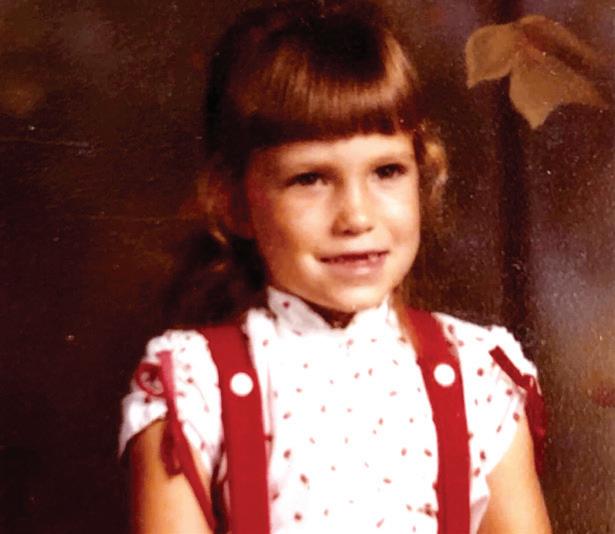
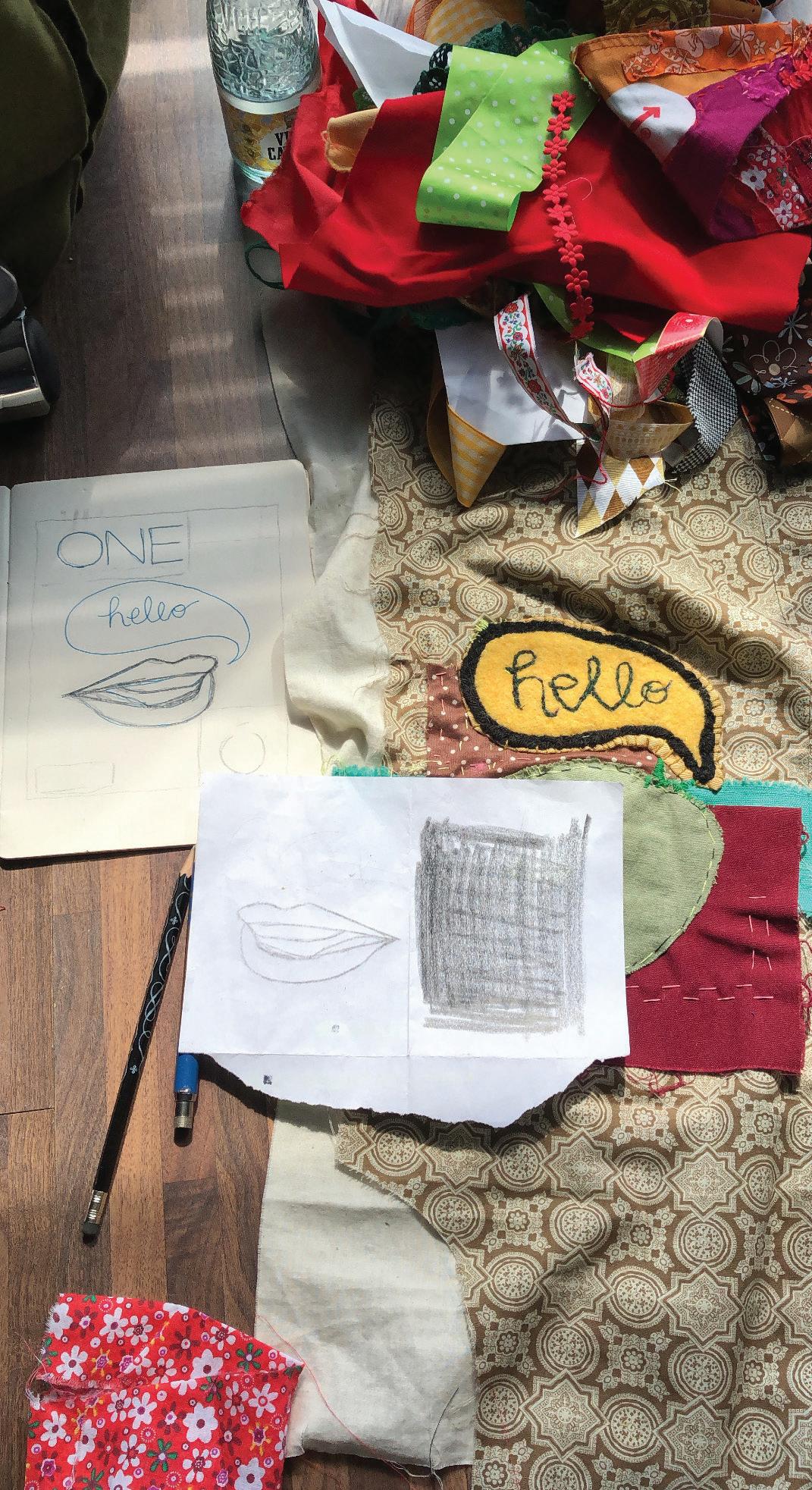
Known for her mixed-media art and yarn bombing installations on places like Crocket Row, Amber used a collection of meaningful storied objects she found that could illustrate Claudia Casas’ story. When Amber read the cover story about Claudia, she realized they were the same age. At 2:30 in the morning after she got home from Spain and France, she found a random picture of herself as a little girl in the late ’70s/early ’80s. She became nostalgic and felt connected to Claudia’s early story. Commonalities. “I felt very bonded in a way just by creating this piece of art about her. I felt like ‘little me’ and Claudia could have been friends,” she says. Amber taught in elementary school for many years and said she has a special place in her heart for those who teach kindergarten, which Claudia did for 20 years. But what really captured her heart was the way Claudia became an advocate for herself at such a young age — smiling, saying “hello” and sharing her disability to any curious gawkers — the same age as Amber was in that photo. “The way that Claudia’s mom taught her to smile back and engage a person in conversation and at such a young age, that stood out to me, more than anything else because that is how you become your own advocate just like the story says,” she says. So the first image she had in her mind was a mouth like the ones she makes to photo bomb, saying “hello.” Moving around the cover, you see nods to Claudia’s life, like the composition notebook, image of a teacher, which came from an old flashcard used to help children study time. For Amber, hexagons are a strong geometric shape symbolizing strength, so she created patterns out of hexagons and old children’s books that Claudia could have read to her kindergarten students. Pieces of fabric from old shirts dating to the late ’70s and early ’80s were added. The hands say, “Here I am,” which is a stamp she made by carving an eraser. When she was photographing the work on her roof, she saw some pebbles and found a pipe. These random objects became a part of that moment, the story of the creation of the cover art, so she included them. They became storied stones.

Each issue we ask a local artist to design our cover, and we write about what inspired her design here in the Craft section of OTK Magazine. If you are interested in designing one of our covers, email art@onetoknowmagazine.com.
POWER IN POSITIVITY
Claudia Casas teaches empathy, empowerment
By Erin Ratigan
In 1975, Esmeralda Kruse knew something was wrong. She was going into labor a month and a half early, and she’d had
abnormal bleeding the month before. She underwent an emergency cesarean section, but her baby was born jaundiced and, at one point, had little oxygen reaching her brain. An hour after the delivery, her baby had a seizure and was moved into intensive care at another hospital. For three weeks,
Esmeralda was separated from her baby, whom doctors said might not survive infancy. “The first time that the doctors placed Claudia in my arms, I felt such joy and a relief to know that she would now be in my care,” Esmeralda says.
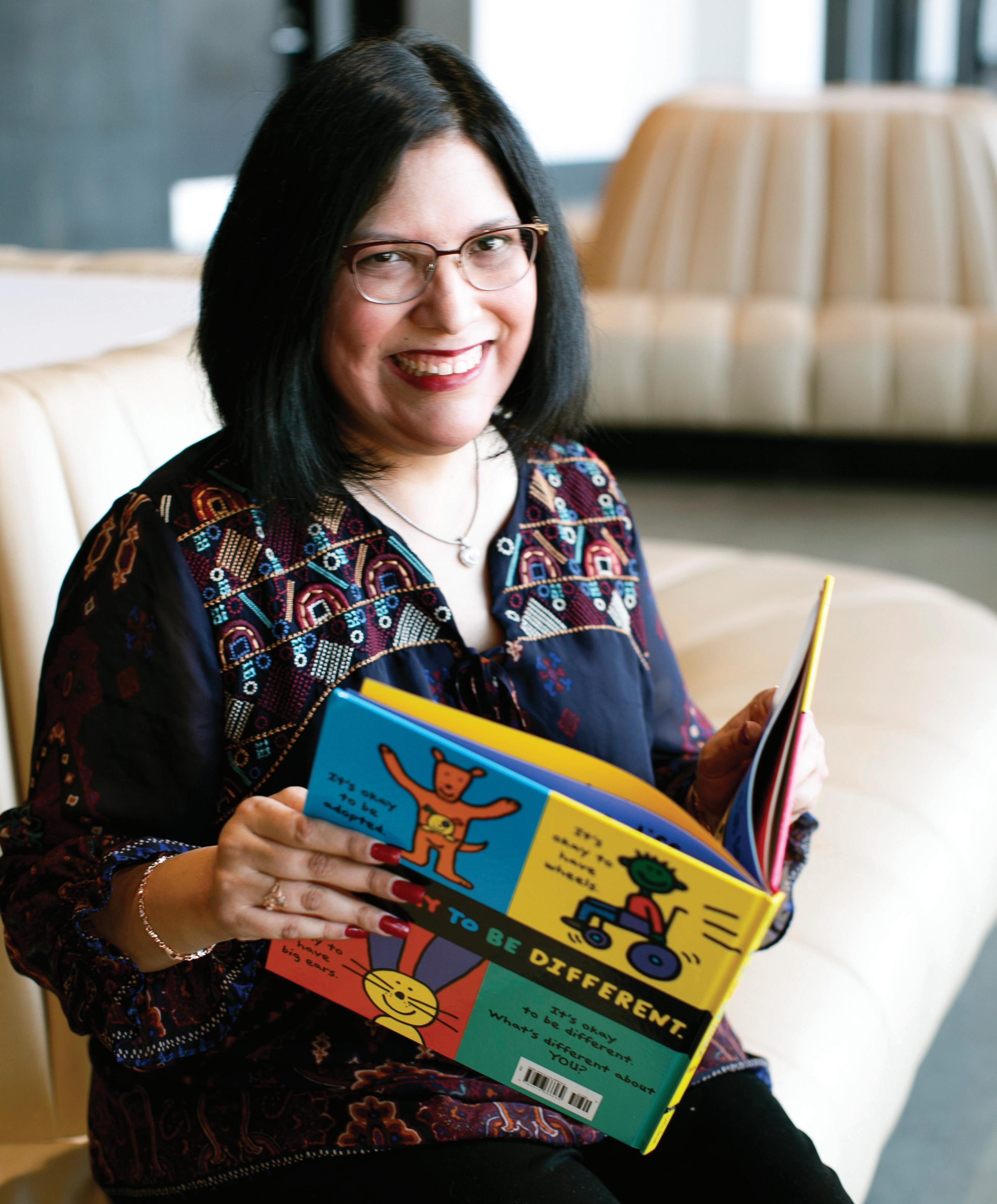
Her seizure ultimately left Claudia Casas with cerebral palsy. She started physical therapy within a week, and despite doctors’ initial concerns about her future motor skills, she started speaking in complete sentences before she was 2. While many people with cerebral palsy use wheelchairs (40% to 50%, according to the Cerebral Palsy Research Network), Claudia insisted that at 4 years old she get leg braces. She wore them for six years.
According to the CP Family Network, CP is the most common motor disability among children and affects one in every 345 children in the U.S. That’s higher than the global average, which ranges from one to four out of every 1,000 children. One in three people with CP can’t walk, and one in five can’t talk.
Claudia remembers her childhood fondly — she was a quiet little girl who liked dogs, country music, books and horseback riding. She also loved school and smiles when she recalls her early school years at Bruce Shulkey Elementary School in Fort Worth. Initially, the school didn’t have a program for physically disabled students, so Claudia’s father (and several other parents) requested the school board create a class for handicapped children. Their request was granted, and over 30 years later, Claudia still has friends from that program.
“I absolutely loved that class because I felt like everyone understood. The teachers understood my plight and my difficulty with walking and getting around. They were very understanding and very supportive,” she says.
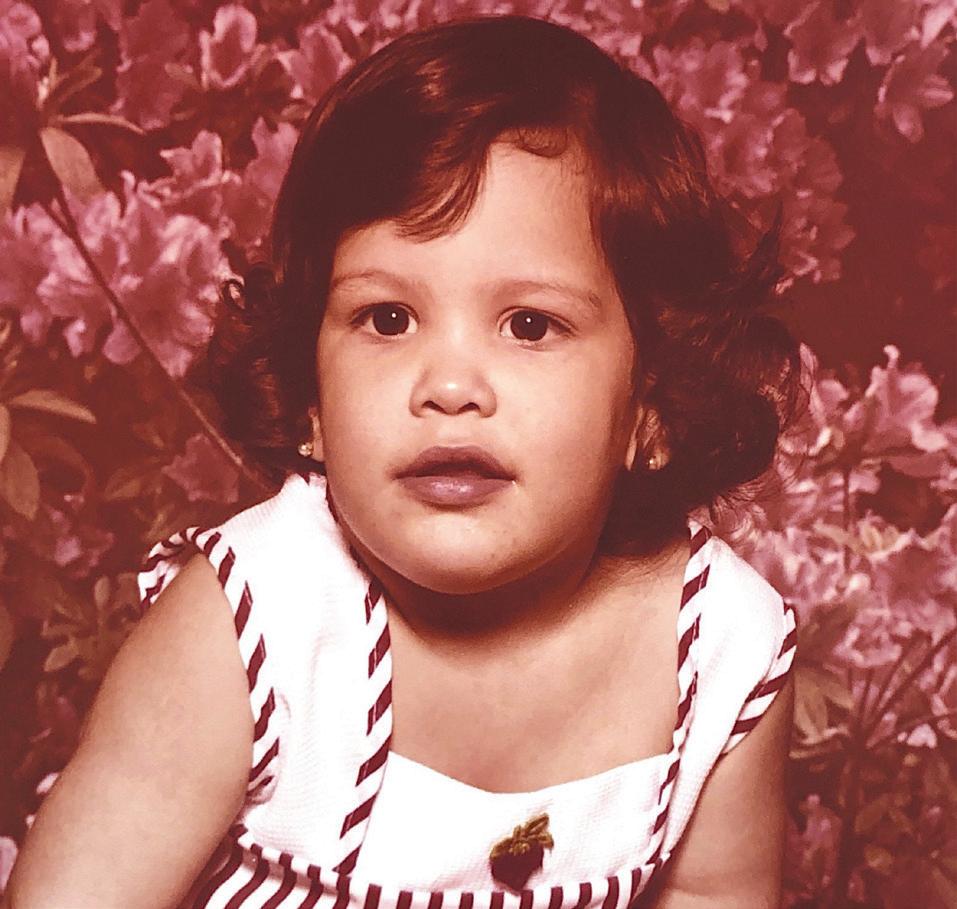
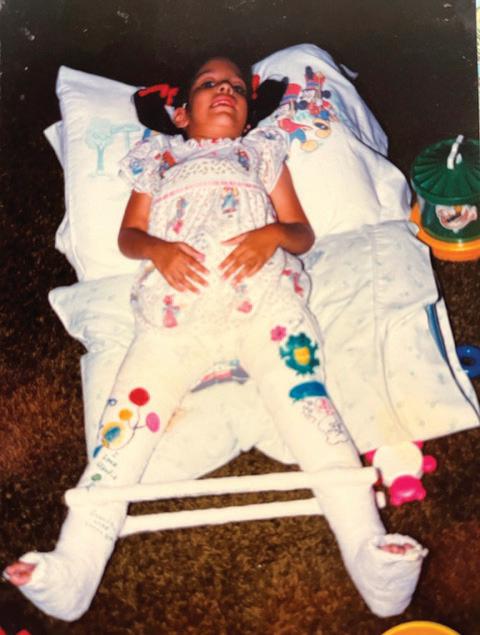
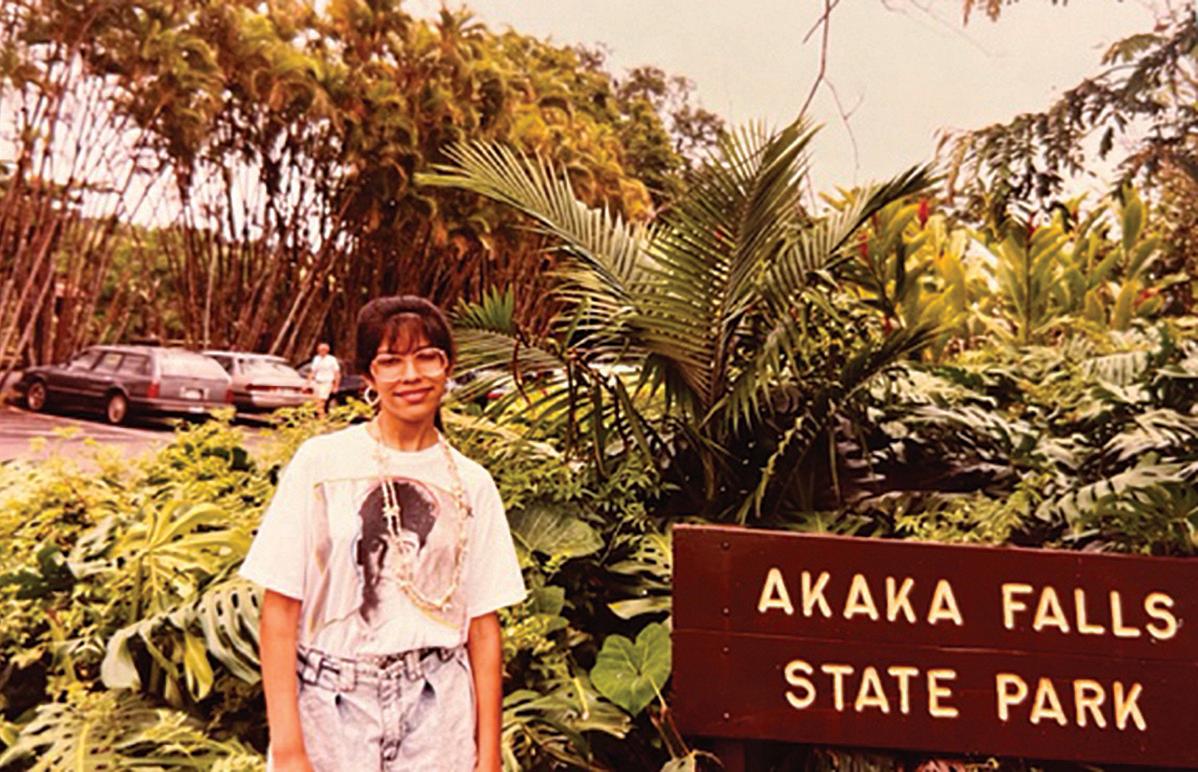
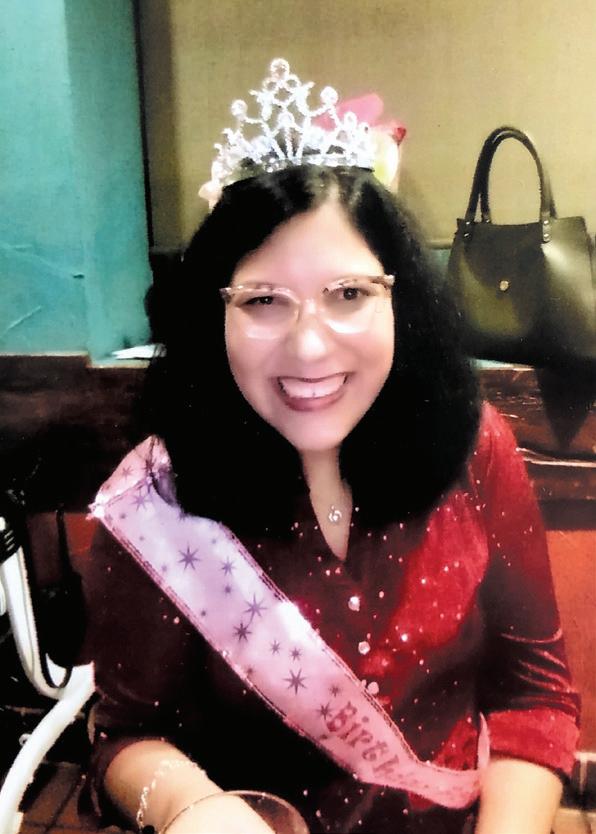
-ESMERALDA KRUSE
The Centers for Disease Control and Prevention define cerebral palsy [CP] as disorders affecting one’s posture and ability to move and balance. There is no known cure for CP and symptoms vary, according to the CDC website. Many with CP also experience intellectual disability; seizures; impaired vision, hearing or speech; or joint issues. Claudia’s case is purely physical and does not include intellectual disability.
She was shy and introverted, never wanting to “bother anyone,” so when she was mainstreamed into nonhandicapped classes in fourth grade, her mother began emphasizing the importance of advocating for herself — of asking for help when she needed it, and not being embarrassed that she walked a bit slower than other kids. Self-advocacy was a skill she’d been learning at 3, when Esmeralda first sat her down and taught her how to respond when people stared at her. Her mother explained that many people simply didn’t understand CP, so the best thing to do if they stared was to smile back. By the time Claudia was 4, she was introducing herself to strangers and sharing information about her CP. Usually, this started with her asking, “Would you like to know a little bit about me?
As she got older and learned more about CP, she was able to teach people more about her disability. She says being able to tell others about herself this way not only helped others by spreading awareness, but it helped her find her life’s purpose.
“My disability does not define who I am, but it’s helped me realize the kind of person I want to continue to be. To help others so that they can understand — no matter what they go through in life, they can have a voice of their own to advocate for themselves,” she says.
Smiling at staring strangers might sound daunting, but Claudia says it came naturally to her. She’s been a cheerful person since infancy, greeting her mother from her crib each morning with a wide smile. Ultimately, she says her mother’s instruction wasn’t just about being friendly to strangers; it was about not letting them break her spirit. She says that lesson became a powerful force in her life as it helped motivate her to speak up for herself and others.
“That’s why, when people say, ‘Don’t you have bad days?’ and ‘Are you upset or sad about it?’ I will say, ‘Everyone has bad days. … it’s just how you deal with it and how you learn from it and move forward,’” she says.
The way she says this is striking. For even when alluding to having bad days, she did so with a smile. She can discuss her chronic hip, ankle, knee and back pain, but points out that it’s something she’s “learned to deal with” by staying efficient to spend less time on her feet. When the pain is worse, she distracts herself with music or watches something lighthearted on TV. Esmeralda says that’s how Claudia has always been — ending even their toughest conversations on a hopeful note. They sometimes discussed her challenges at school, but then Claudia would compassionately shift the attention toward others whom she felt were in greater need. “She would say, ‘Mom, can you imagine the kids who don’t have what I have? And you and brother and Dad?’” Esmeralda says.
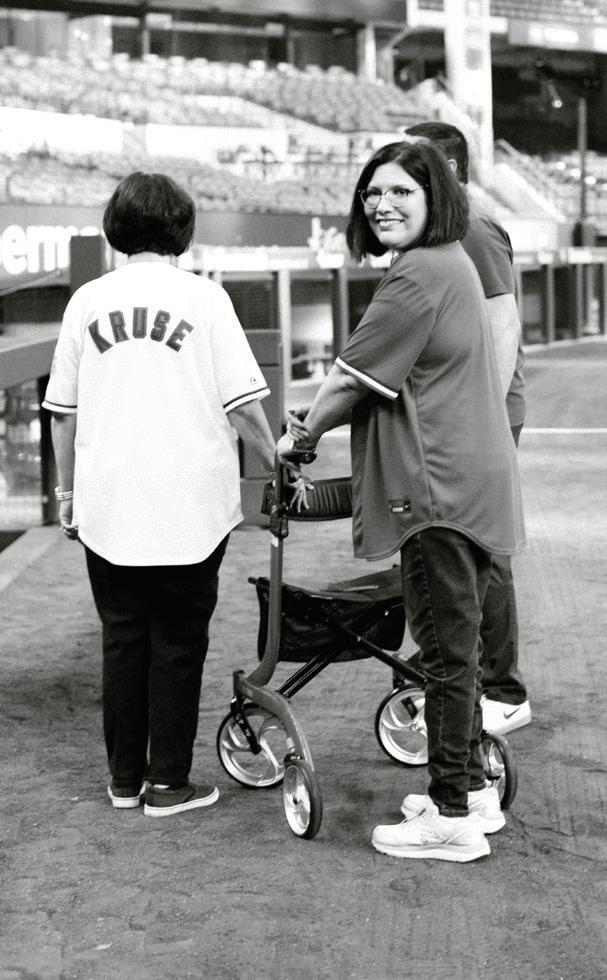
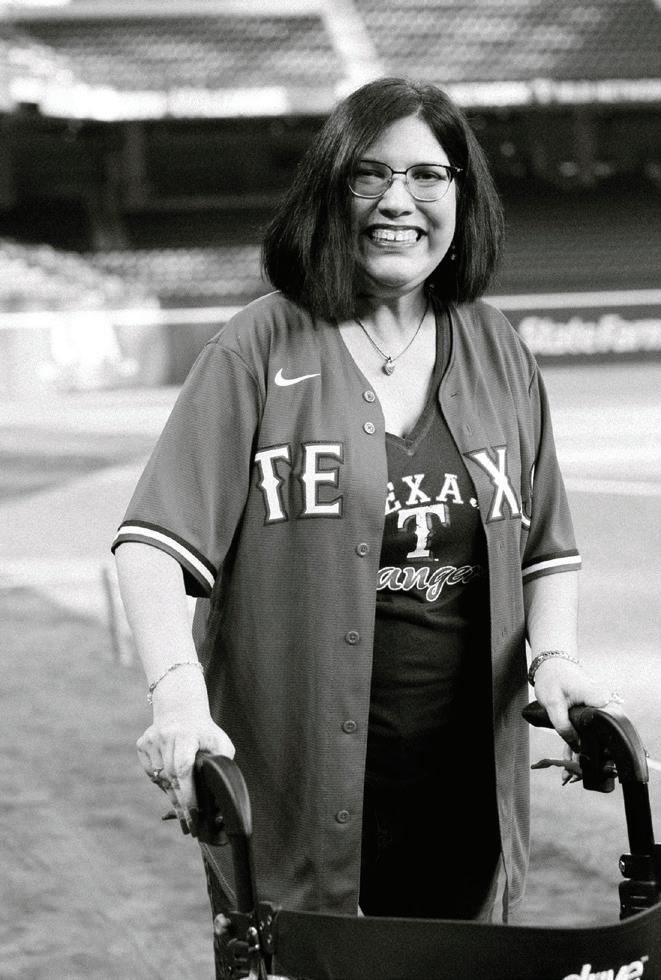
The Texas Rangers was a big part of Claudia’s childhood. The games on TV brought them together in the living room. Going to games at the stadium was also special. “At the end of the day, baseball is a kid’s game, and even though I wasn’t able to play as a child, the Rangers always made me feel apart of the team,” Claudia says.
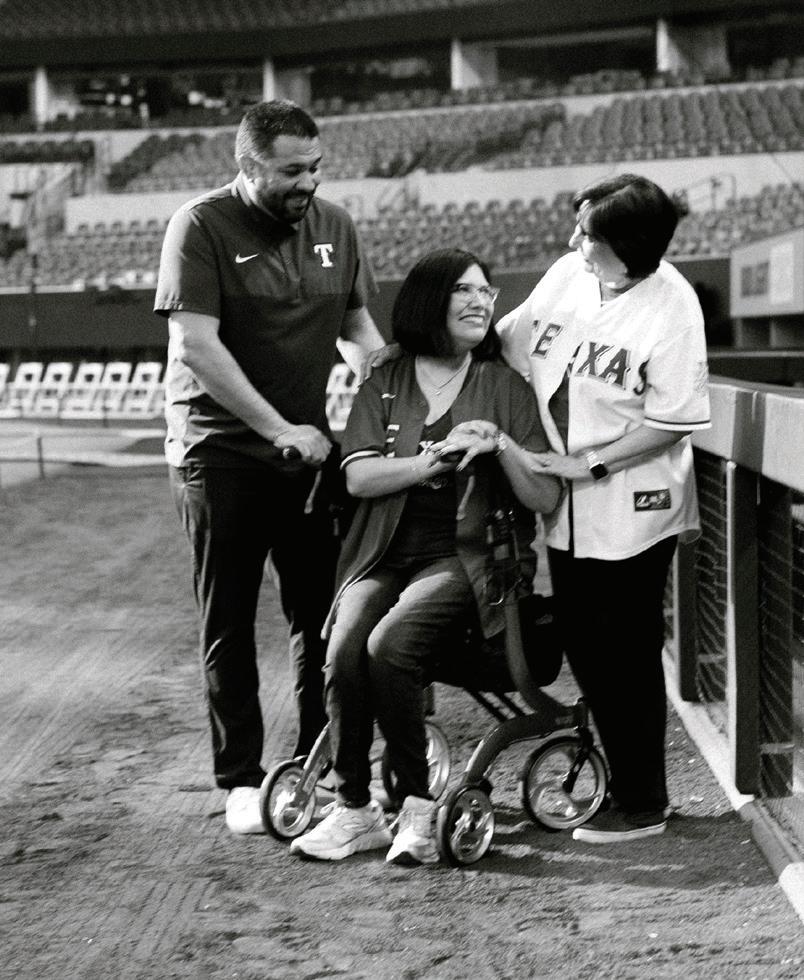
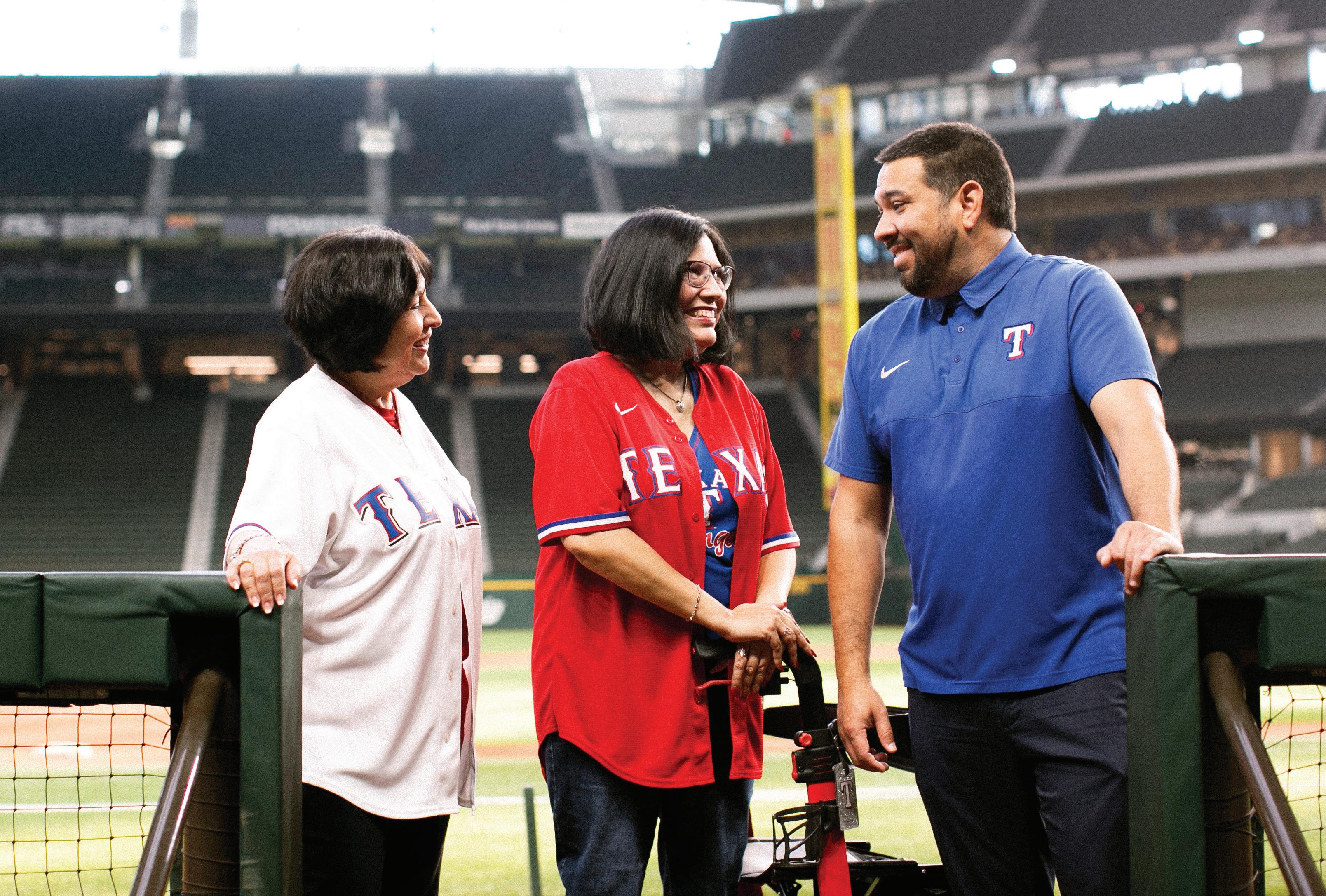
Claudia’s brother, Ray Casas, describes his sister as the epitome of resilience and strength of character. “She is proof that regardless of physical or mental ability, anyone can accomplish anything you want if you want it badly enough,” he says.
He and Claudia attended elementary school together and remembers walking with her to class. Claudia describes her fully abled classmates as supportive and kind, but Ray remembers seeing other kids staring at her as she navigated the halls with her walker. Like many brothers, Ray was protective of his sister and says the staring always angered him. Usually, he would stare back at them or (on bad days) confront them. But Claudia barely seemed to notice and would keep walking as though nothing had happened. “She never wavered. She never cried; she never got upset. We would talk about the stares, but she’s built like a rock,” he says.
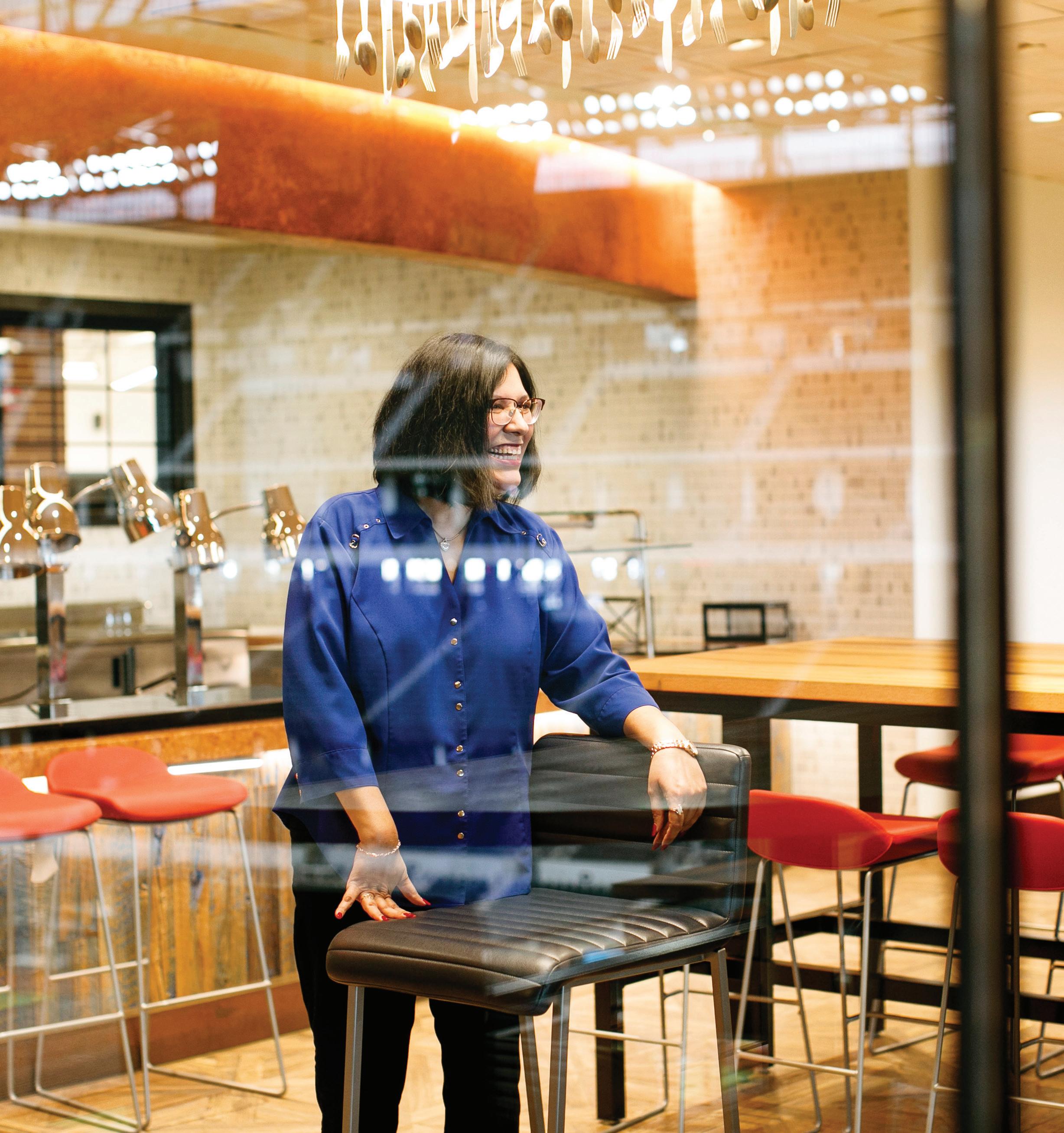
He recalls one occasion when her spirit faltered. That was the summer of 1980 when Texas was under a record-breaking heat wave, and 5-year-old Claudia was stuck in a full-body cast. She had just had a major surgery where doctors planted a steel rod into her hip to help align her legs. That summer featured 69 days of at least 100-degree heat, and Claudia was bedridden, unable to play with her brother. “I would go out, of course, and play and sweat and sunburn and everything. But when I would come back in, she was so down because she couldn’t go outside,” he remembers.
So, every night when the temperatures dropped a bit at 9 p.m., Ray and Esmeralda would lift Claudia from her bed and place her in her little red play wagon so he could wheel her around the yard. “I took being outside for granted, where she was just overcome with joy just to be outside and be in the wagon. Couldn’t walk, couldn’t feel the grass on her feet, but just to breathe the night air — that was something that I’ll never forget,” he says.
That memory highlights one of the lessons Ray says his sister has taught him: to appreciate the little things. Ray is older than Claudia but says he’s always looked up to Claudia and tried to follow her example. In the process, he says she’s taught him patience, love, grace and empathy. “Timewise, she may be younger, but I’ve always felt like the younger brother because I’ve always looked up to Claudia,” he says.
Ray says his sister’s kind nature is accompanied by fierce determination. The latter is a recurring theme throughout her life story, from her refusal to use a wheelchair to her decision to leave home and live independently during her first few years of college. Esmeralda says her daughter’s university years saw her confidence blossom and helped solidify her ability to speak up for herself. “College was a major factor … I think that she just grew her wings,” Esmeralda says.
Claudia’s passion for helping others encouraged her love of education. Esmeralda was a first-grade teacher, and when Claudia had days off from middle school, she would go watch her mother teach. It was always a bonding experience for her and her mother, and that was when she knew she wanted to be a teacher. “She learned that love of teaching, and then when she thought about it some more, she said, ‘Mom, I’d love to help special ed kids to know that they have a place in life if they work hard,’” Esmeralda says.
She made her dreams real when, after earning her bachelor’s in elementary education and teaching from Our Lady of the Lake University in San Antonio in 2001, Claudia began teaching at Worth Heights Elementary School in Fort Worth. She taught second grade, special education, and pre-K Montessori classes there for six years. “I really felt like it was the right place for me at the time because I felt like I could really impart my knowledge to them and really motivate them to be the very best they could be,” Claudia says.
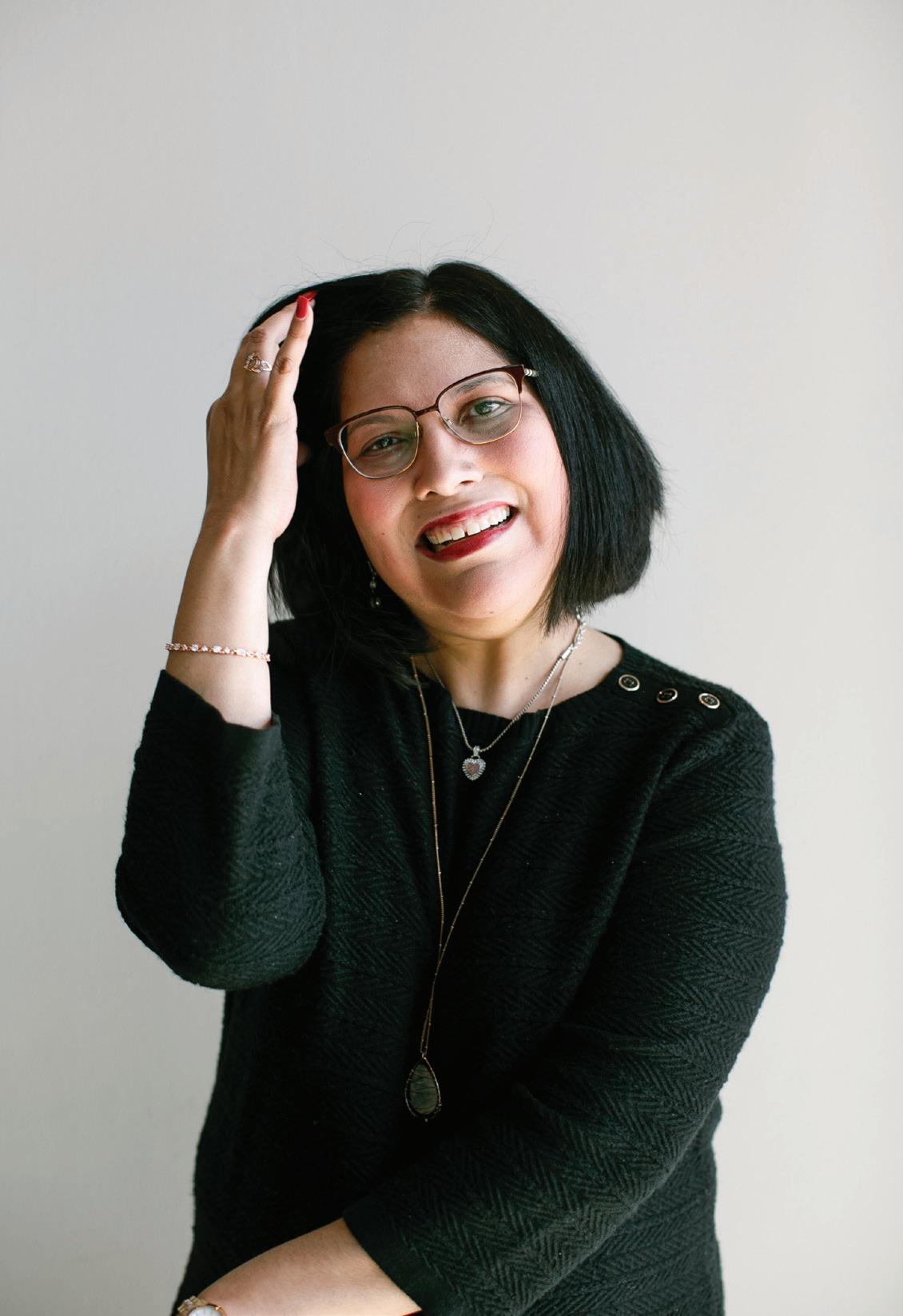
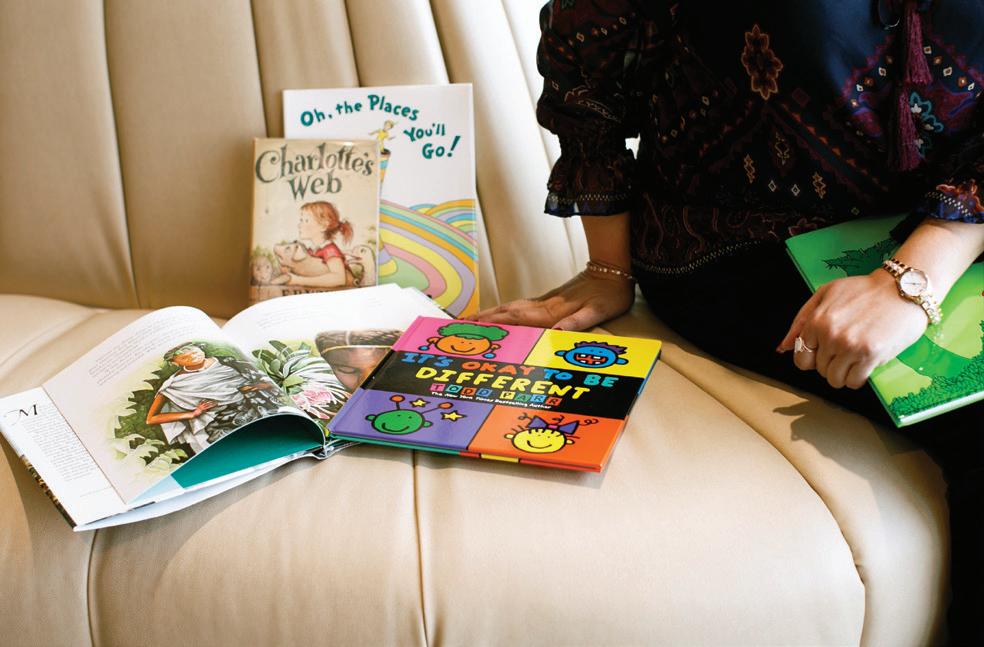
This began a 20-year teaching career, which later included teaching kindergarteners for Fort Worth Independent School District and special education at Tanglewood Elementary School where her mother taught for many years. She says she enjoyed helping children grow and gain confidence — regardless of their physical or mental abilities — and that working with special education children allowed her to teach from her own experience. Her favorite book to read to the elementary school kids was Todd Parr’s It’s Okay to Be Different.
“I felt like I could impart my knowledge to my students because I knew where they were in their educational journey, and I knew how it felt to be in their shoes. So, I really felt like it was the right place for me at the time,” she says.
The work was rewarding, but while she loved working with children, she says she wanted to eventually go into counseling and advising college students. In 2009, she enrolled in an online master’s program from Grand Canyon University. For the next two years, she was a teacher during the day and a student at night.
No matter what Claudia set out to do, her family has encouraged and supported her at every turn. Esmeralda believes her daughter’s drive and ambition stem from the love she’s received throughout her life. “She’s never showed a defeatist attitude. She’s never said, ‘Well, I don’t think I want to do this, so I’m just going to stay home and not do it.’ There’s always been ‘But, what if?’” she says.
Claudia began working at UTA this January. She is now 46 and is an accessibility specialist for the University of Texas at Arlington. Her work entails assessing UTA’s accessibility for disabled students, ensuring the school meets federal requirements, and promoting students’ equal access to disability resources. Ray says his sister’s experience with CP gives her insight to the needs of disabled students, making her a perfect fit for her job as an accessibility specialist. He describes her as a “great listener” who knows how to help others and says it will make her the perfect ally for students.
“I always tell her, ‘You’re the one that not only knows what they’ve gone through but also knows what their needs are,’” he says.
In an age of uncivil social discourse, Ray says empathy is more important than ever. He says people treat the disabled like they would a news article: scanning the headline and forming opinions without reading the whole story. “I know that could be a generalization, … but I feel like we need to do a better job. And that includes me. We need to all do a better job being more empathetic to people that we don’t know and people that are different from us,” he says.
Claudia says her approach to her new job is to do what her mother did for her — to help young people find their voices and develop confidence in their abilities. “I want to make sure that I can give back to the community, to UTA, to anyone that I encounter, because I’ve been so privileged to be surrounded by amazing mentors and amazing teachers and professors,” she says.
Many people spend their whole lives struggling to speak up for themselves. Her message to them is simple: “If they can’t at first, I will advocate for them.”
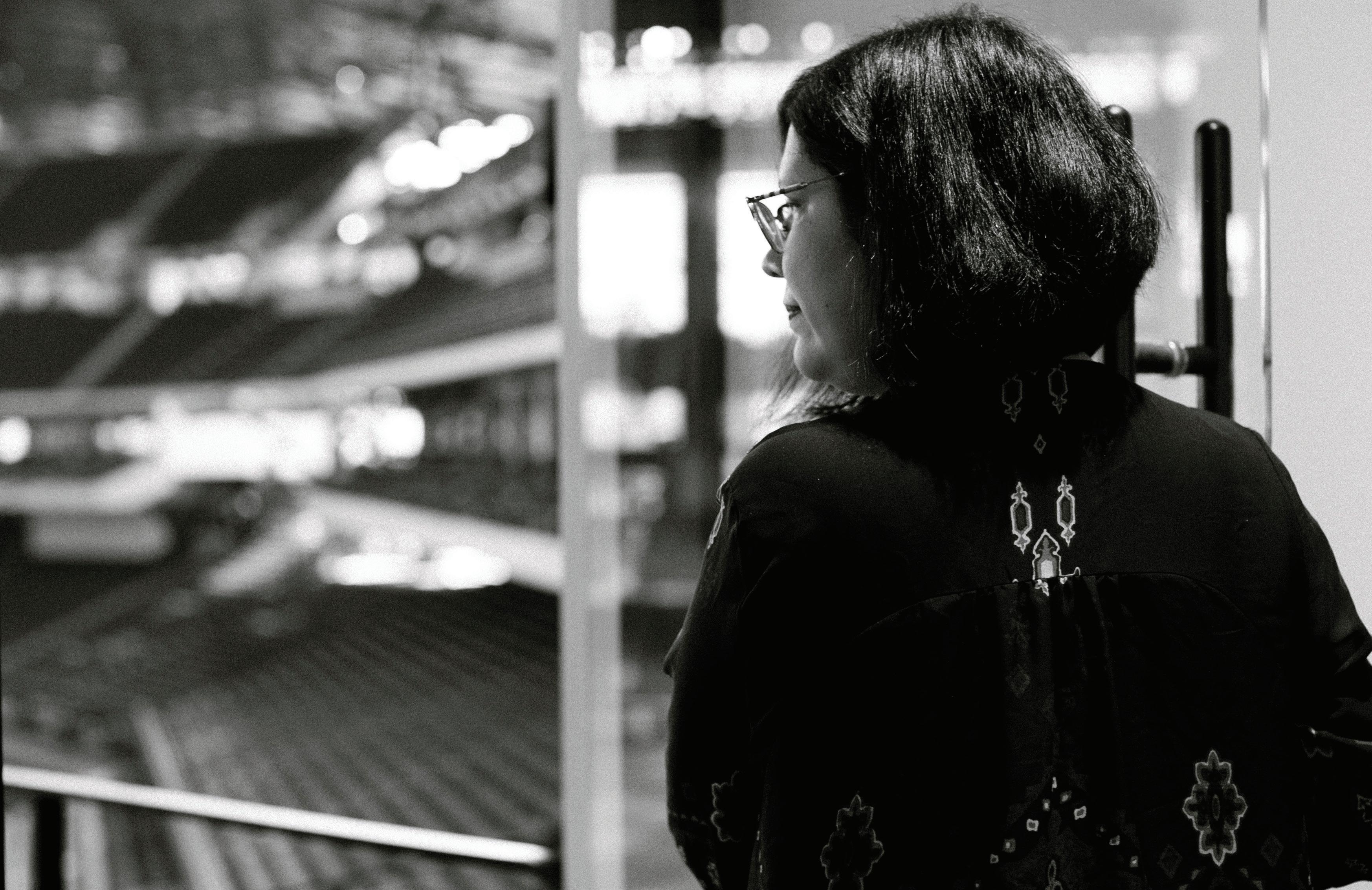
-CLAUDIA CASAS
ABBY OLSTRUP
Artistic Inspiration: Paying It Forward
By Cecilia Lenzen Photo by Azul Sordo
Art has been a part of Abby Olstrup’s life since she was 3 years old. One of her first memories of art is of bonding with her father as he drew cartoons for her to color in, which unintentionally awakened a passion for creativity in the now 18-year-old watercolor painter, and it awakened her desire to pay that forward.
Now, Abby has the chance to inspire a love of art in others. This semester, the high school senior is assistant teaching a voluntary, after-school art class for students from about 5 to 13 years old at the school she attends, Midcities Montessori.
Abby says she never considered teaching, but this job provided her the opportunity to do something she loves in a unique environment. Before becoming a teacher, she taught a few private art classes for family friends and sometimes took commissions for her paintings. Teaching young children is an especially fun challenge, she says, because she gets to impart her knowledge of something she loves to an excited, eager audience.
As their teacher, she draws cartoons for her students to color in during “free time” just like her father did for her. Being able to pay forward the joy she experienced through art as a child means the world to her, she says.
“They can know that they always have art — even if they don’t want to go into an artistic field when they grow up,” Abby says. “If they ever just feel like they need to get something out on paper, they have the opportunity to do it and know that they can create whatever they want to create, and art doesn’t have to look a certain way.”
Amid the COVID-19 pandemic, many young artists like her struggled to find motivation or inspiration for their art, Abby says. Teaching has helped her rediscover her artistic vision and passion while also providing a creative outlet for young students who may not have had one for the last two years. “I hope to give these kids a chance to express themselves through art and be inspired to create,” Abby says.
Although she’s technically still a senior in high school, Abby has enough credits to be considered a junior in college, thanks to the dual credit classes she’s been taking at Tarrant County College. Once she graduates from Midcities Montessori, she plans to attend the Savannah College of Art and Design, a private art college in Georgia, to pursue her career goal of working in fashion and beauty. Until then, she plans to continue providing a creative outlet for her students.
“It’s really fun to be around these kids because it makes me realize how similar I was to them when I was younger,” Abby says. “I’ve been in art my whole life, so I feel connected to these kids knowing that I was doing art classes when I was their age, and now I’m able to provide that for them.”
They can know that they always have art — even if they don’t want to go into an artistic field when they grow up.”
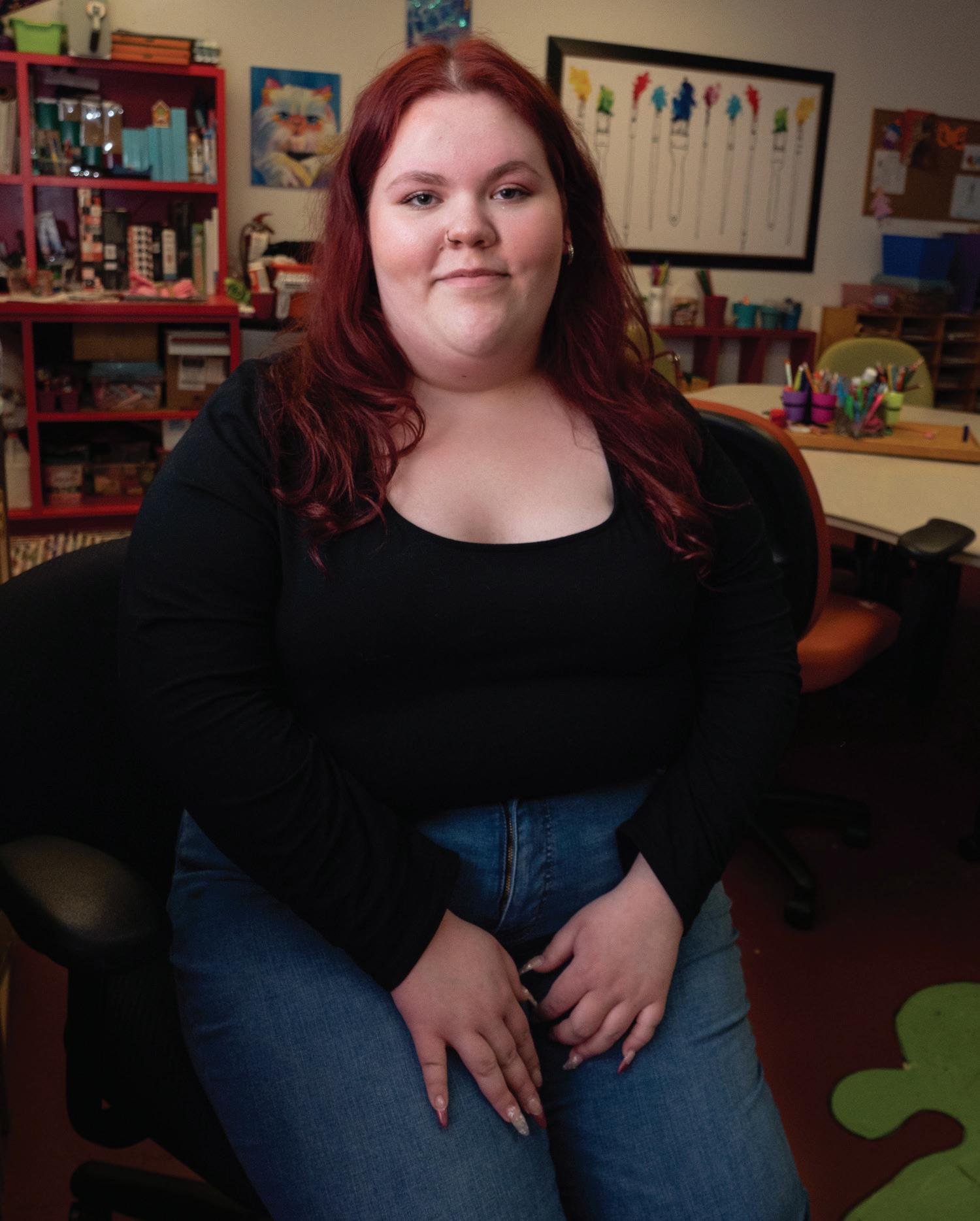
Retail Therapy
How one small, women-owned business lifts up others needing the same support
By Erin Ratigan Photos by Azul Sordo
The atmosphere was grungy and low-key, a faint smell of smoke and craft beer filling the rooms of Tulips FTW as patrons took respite from the evening chill. It was International Women’s Day, and the dive-y bar just south of downtown was filled with booths run by local female artists, business owners and activists.
As the room filled with chatter and the clinking of glasses, artist Hailie Loomis stood beside her booth of abstract acrylic paintings, hands clasped as she explained that most of her paintings are elemental in theme — vibrant burning reds, cool aqua blues, earthy greens. On one end of her table was a painting of a woman, but her face was out of frame, suggesting Hailie’s inspiration was not one individual, but femininity itself.
The event was hosted and made possible by Wandering Roots Markets, a market coordinating business co-owned and run by entrepreneurs Maria Arriaga and Shea Dardis. Hailie has vended at multiple Wandering Roots events, and says Maria and Shea consistently draw a large crowd of shoppers and are more organized than other event coordinators she’s worked with. This allows small businesses, startups and local artisans to get a leg in and some eyes on their work. “They’re really great women … They’re very welcoming and encouraging,” she says.
Each Wandering Roots market follows different themes and supports different organizations with each market. As a result, they’ve hosted events in a variety of settings, from bars and breweries to the Fort Worth Botanic Garden. Perhaps one of their most memorable events was the Big #KindnessDuck Party in Trinity Park last October, where they partnered with the Kindness Duck Project and hosted over 200 vendors. That event included an appearance from the world’s largest rubber duck, which (inflated to an impressive 6-stories tall) was sent afloat along Trinity River to bring awareness around the importance of, well, kindness.
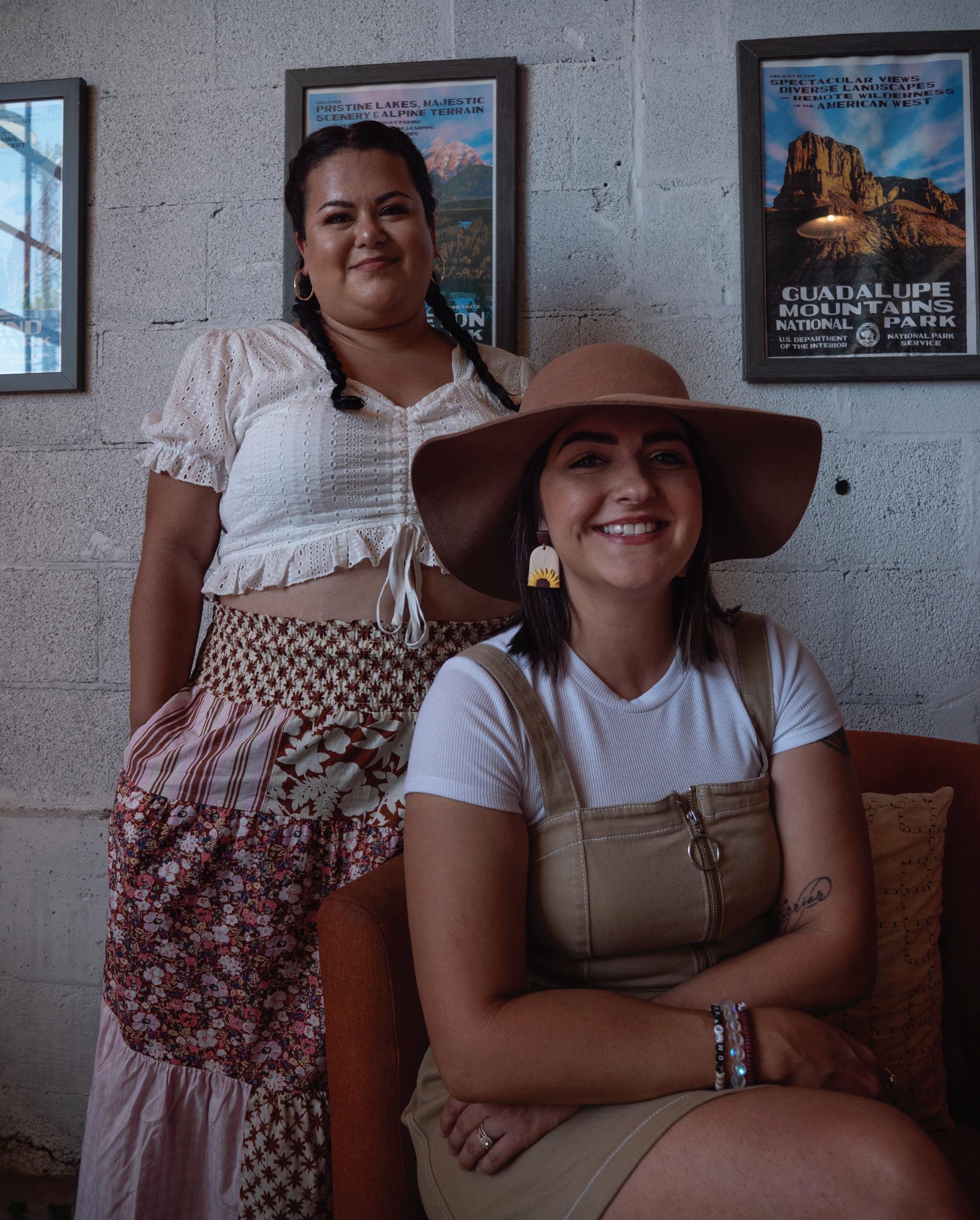
(left) Maria Arriago and (right) Shea Dardis
In 2021 they hosted 32 markets, and by March this year, they had already filled their vendors’ list for the rest of 2022. Prospective vendors are now joining a waiting list in hopes of catching last-minute openings. One of Shea and Maria’s favorite events was the 2021 Pride Crawl market, which saw more than 50 markets spread across three blocks in the Historic South Main (SoMa) District. The event included a march, which Shea says started small but soon had over 200 people marching by the time they reached the end of their route. There’s footage of the march on their Instagram page.
“If I watch the video, I get emotional,” Maria says.
Shea and Maria met at a market in 2019 when they were both running booths for their small businesses. When the pandemic hit and public events were shut down in 2020, they grew concerned for the other local businesses that relied on such events for exposure and sales. They started Wandering Roots that October, organizing their first event once the city permitted public gatherings to resume. They only intended to operate until December, but their vendors were enthusiastic and encouraged them to do more events. So, they continued. “The vendors were extremely grateful that there was something to do — some outlet for them to sell their stuff, ’cause that was like their full-time job,” Shea says.
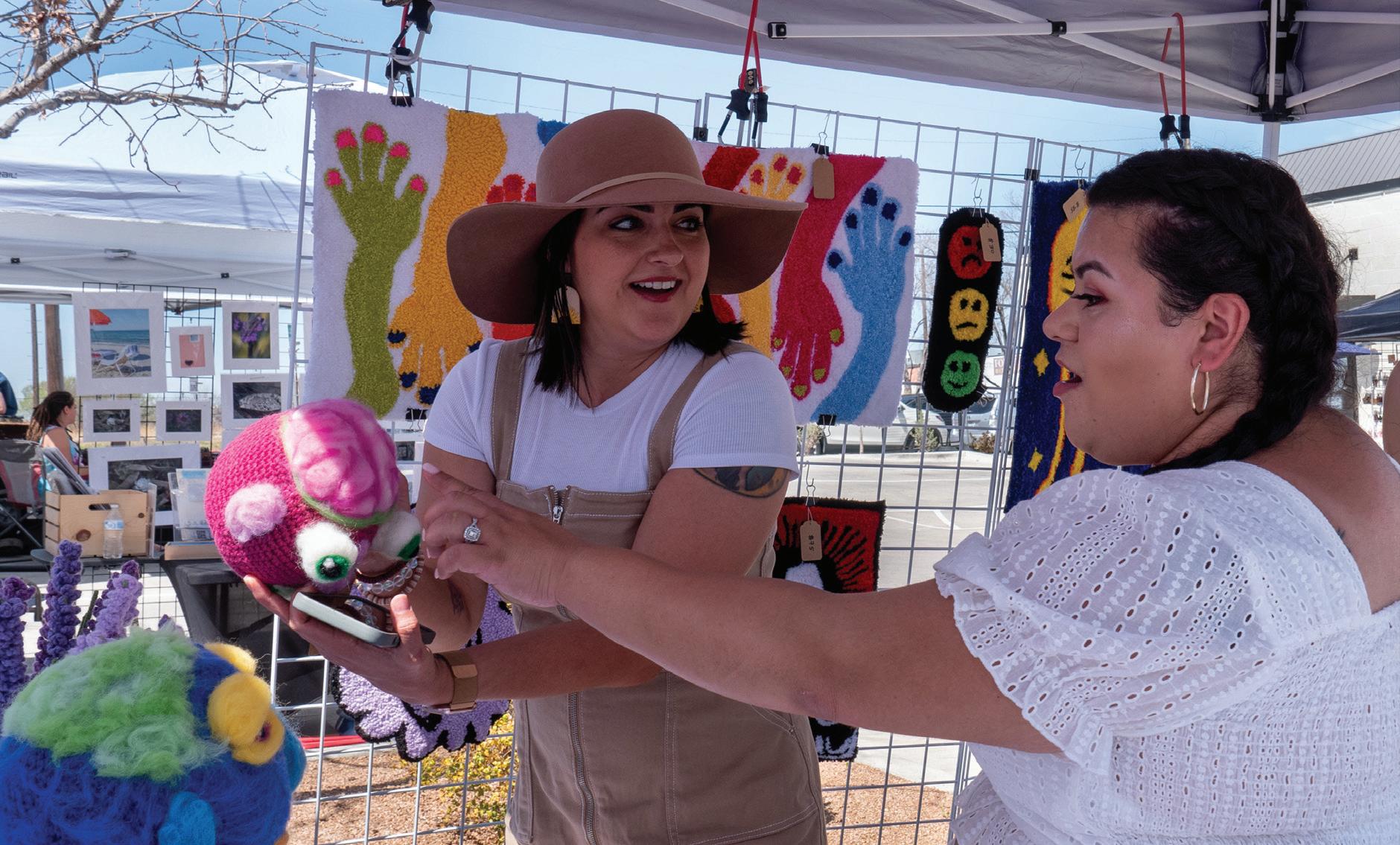
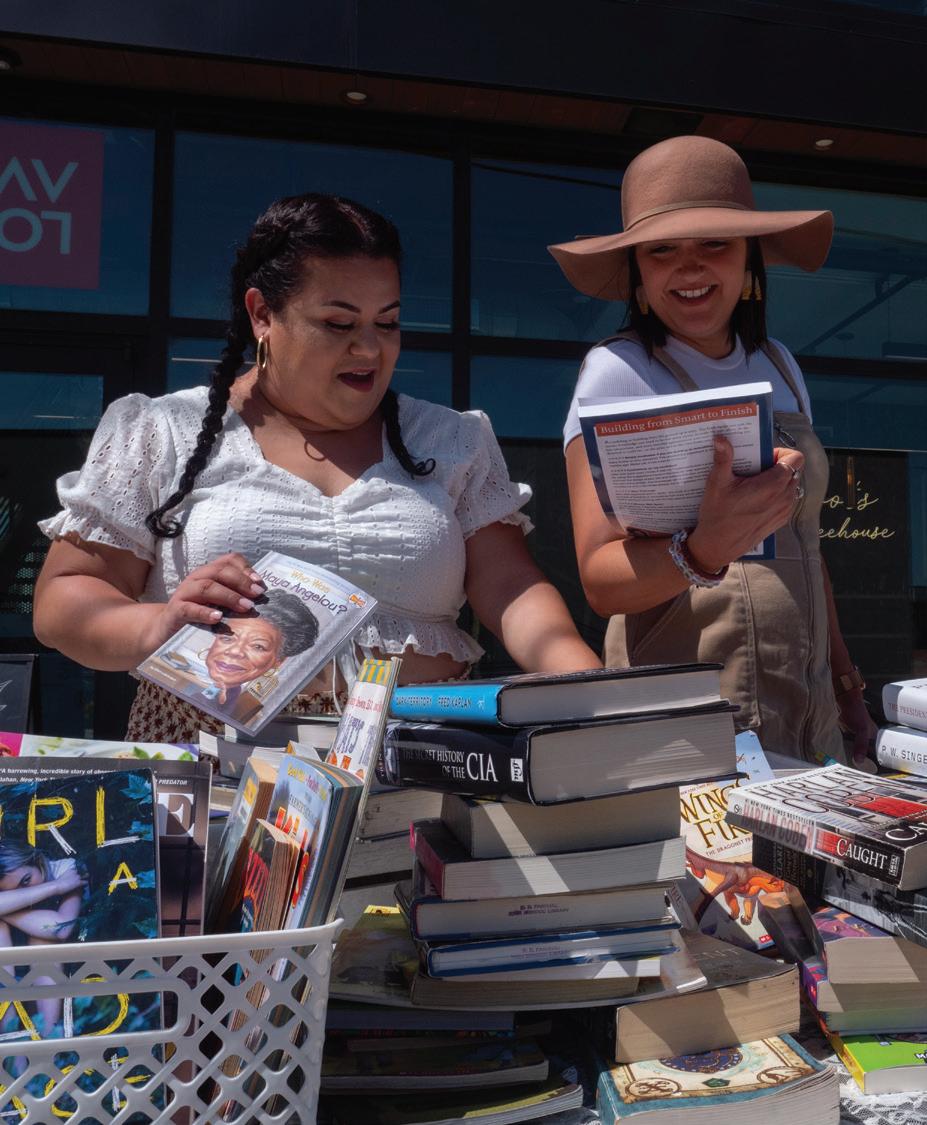
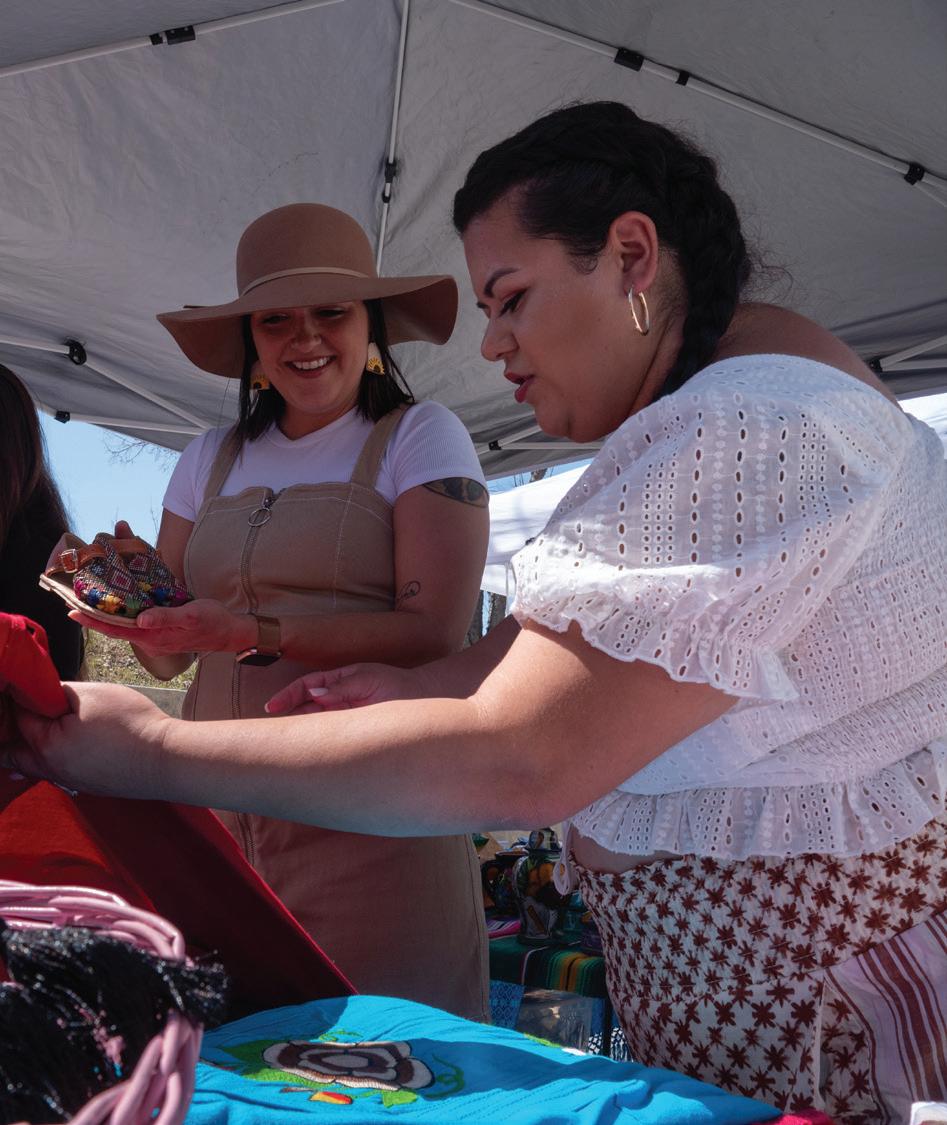
Shea says the recent popularity of markets and pop-ups likely stems from a wider consumer shift toward supporting small, local businesses over chain retailers like Walmart or online marketplaces like Amazon. This trend is prevalent among younger consumers, who increasingly favor ethical sourcing and responsible business practices. “I feel like the Fort Worth community is huge on shopping local and supporting local and small businesses,” Shea says.
A 2019 dataset from the statistics research website Statista examined the reasons why shoppers 18 and older shopped at pop-ups. Fifty-five percent of the shoppers surveyed cite the unique shopping experience or exclusive products as their primary interest in pop-up shopping, and 47% say they want to support local or independent businesses.
What they love most about their work is the opportunity to make new friends and be part of a close-knit artistic community. “I love being around the community of the small businesses. We’ve gotten to know each other over time, and just building on relationships. And also having the flexibility for our families at home to be there for them when they need us,” Maria says. Their success and love of their community led them to open their own office location January 2022. The 670-square-foot is also a space for artisans to host classes and workshops, where they can continue to nurture their new friendships and community of small businesses in Fort Worth.
In 1860, the poet Henry Wadsworth Longfellow immortalized an obscure folk hero of the American Revolution with his work “Paul Revere’s Ride.” The wildly popular poem transformed Revere into a national legend—but he wasn’t the only Patriot who risked everything to ride for freedom. A 15-year-old girl did too.
[Best read aloud while wearing colonial dress and wielding a stick.]
Listen, my children, and you shall hear Of a midnight ride—not Paul Revere’s, But a longer, stormier, lonelier run By a brave teenage girl with a stick for a gun. Remember her name: Sybil Ludington, A bonafide hero of the American Revolution… …Well, as you can see—
Her name doesn’t rhyme. Her tale is not known, She had no PR dude named H. Longfellow Who penned Revere’s catchphrase We all know to be: “One if by land,” and, “two if by sea.”
Yet Sybil’s heroics deserve to stand tall, She rode 40 miles (versus 20 by Paul, Who was nabbed by the Brits Before reaching the end Of his route, which was Concord— And he traveled with friends. This is not to throw shade on Mr. Revere, His contribution to our country is clear; The tea-dumping silversmith’s rightly held dear). But Sybil raced on from twilight to dawn, On her faithful horse Star—and she did it alone, She finished her mission and made it back home.
So listen, my children, and you shall hear Of a girl more hardcore than Mr. Revere: On the 26 of April, 1777, A horseman brought news of British aggression To young Sybil’s farm from the Danbury store, (She had just turned 16 but a few days before). Her dad led the militia in that part of New York, And they both listened close to the rider’s report:
“The Redcoats are coming! The Redcoats are here! They march on Danbury— The danger is clear! The town holds a stockpile of army essentials, Food, ammo, and guns for our own Continentals. They’ll take the supplies, destroy every house, Then they’ll burn the whole city right down to the ground!” He capped off his news with a vehement yelp: “They’re attacking us now—Please sir, you must help!” Sybil knew the militia would have to be raised, But her pa couldn’t go—he needed to stay To sort out the troops as they massed at his farm, And the rider was too tired to sound the alarm— He knew not the land, and his horse was run down. So who would step up and go spread the word ‘round?
“I’ll do it,” said Sybil. “I’ll rally the men, I’ll wake them and tell them it’s time to fall in. I know where each lives, and I know all the roads,” Her dad didn’t like it—but who else could go? “Be careful,” he urged, “these are perilous times, This county is crawling with Loyalist spies, Hoodlums and outlaws who’ll kill you for fun. Take this stick for protection—it’s better than none.”
She saddled up Star and she dashed off the farm Into the squall of a thunderous storm, Down narrow dirt roads She rode, and she rode, Alone in the dark, So gutsy and bold. Through forests and fields and mud inches thick, She reached every house, and she roused the men quick
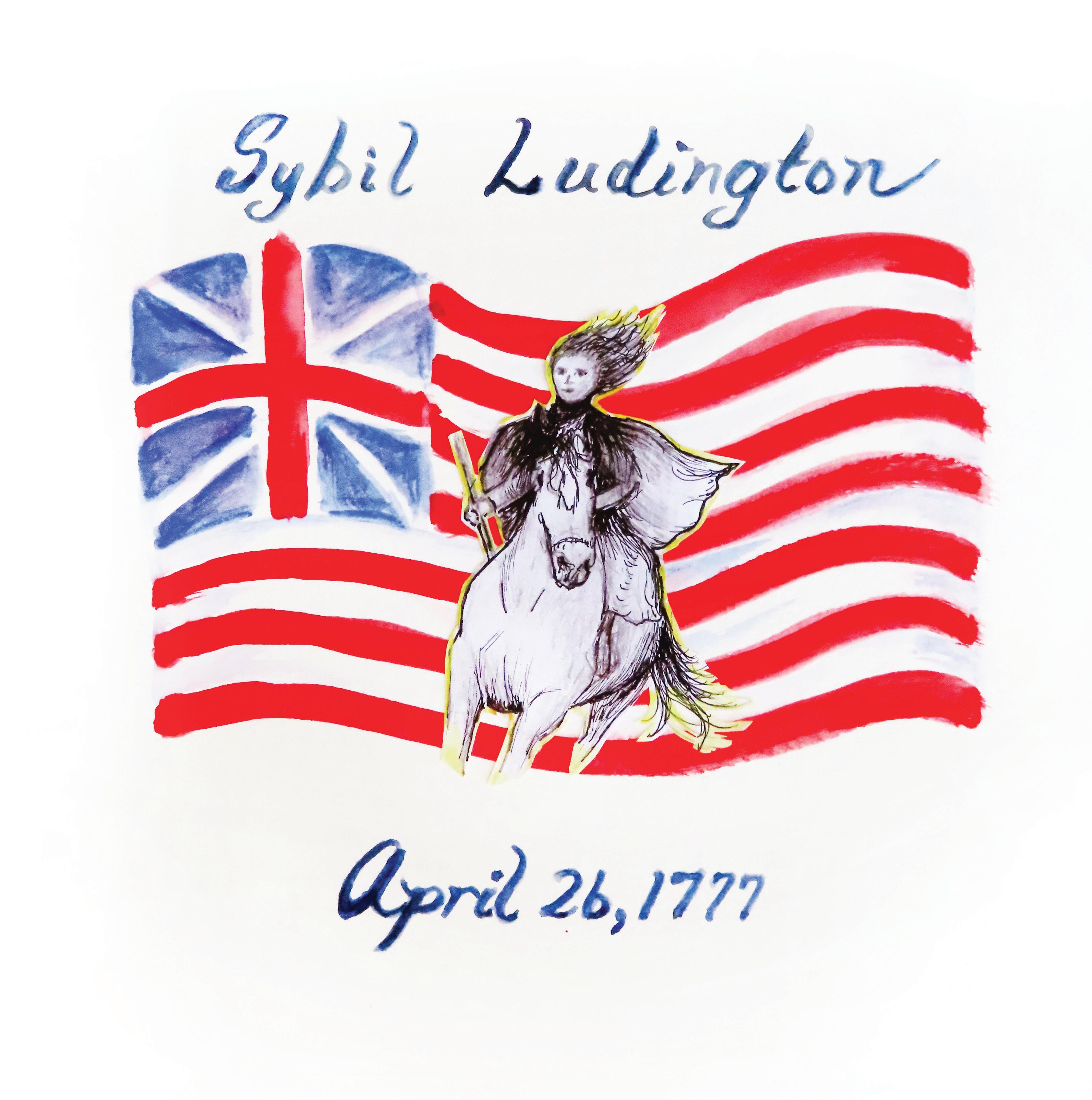
By banging on shutters with her trusty stick. And so through the night went her fierce call to arms To every Dutchess County village and farm, By daybreak the rain had soaked down to her bones; Her duty completed, she turned and went home. And there at her house in the pale morning light The entire militia stood ready to fight! They marched into battle to meet the army And harried the Redcoats right back to the sea.
News of these skirmishes soon was the talk In all of the pubs and on every walk. The Brits burned the stockpile— But we won the day, For they never invaded in quite the same way. They stuck to their ships, and they stayed to the coast, While Patriots flocked to the army in droves, Men in the thousands came down to enroll. They stood up for freedom, like brave Sybil had— And a scrappy young country was born in this land.
You’ve listened, my children, and now you can share The tale of this dauntless teenager who dared To ride through the danger, the rainstorm, the cold, Her name still doesn’t rhyme— But her feat you now know. Let’s remember her well, as we all should have done, Don’t forget the teen hero: Sybil Ludington.
